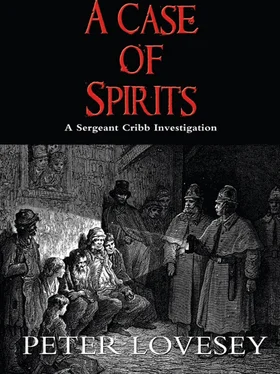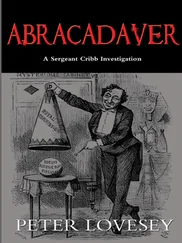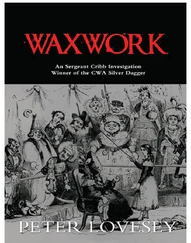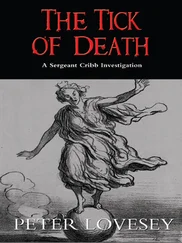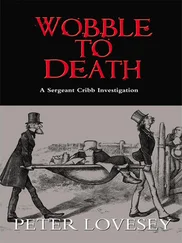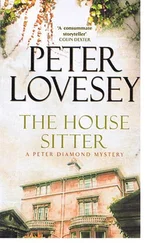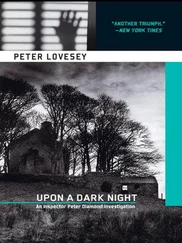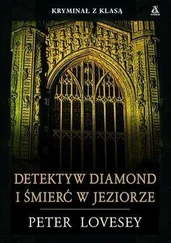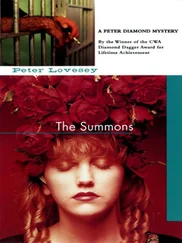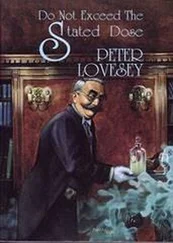Peter Lovesey - A Case of Spirits
Здесь есть возможность читать онлайн «Peter Lovesey - A Case of Spirits» весь текст электронной книги совершенно бесплатно (целиком полную версию без сокращений). В некоторых случаях можно слушать аудио, скачать через торрент в формате fb2 и присутствует краткое содержание. Жанр: Исторический детектив, на английском языке. Описание произведения, (предисловие) а так же отзывы посетителей доступны на портале библиотеки ЛибКат.
- Название:A Case of Spirits
- Автор:
- Жанр:
- Год:неизвестен
- ISBN:нет данных
- Рейтинг книги:3 / 5. Голосов: 1
-
Избранное:Добавить в избранное
- Отзывы:
-
Ваша оценка:
- 60
- 1
- 2
- 3
- 4
- 5
A Case of Spirits: краткое содержание, описание и аннотация
Предлагаем к чтению аннотацию, описание, краткое содержание или предисловие (зависит от того, что написал сам автор книги «A Case of Spirits»). Если вы не нашли необходимую информацию о книге — напишите в комментариях, мы постараемся отыскать её.
A Case of Spirits — читать онлайн бесплатно полную книгу (весь текст) целиком
Ниже представлен текст книги, разбитый по страницам. Система сохранения места последней прочитанной страницы, позволяет с удобством читать онлайн бесплатно книгу «A Case of Spirits», без необходимости каждый раз заново искать на чём Вы остановились. Поставьте закладку, и сможете в любой момент перейти на страницу, на которой закончили чтение.
Интервал:
Закладка:
‘Oh glory!’ said Thackeray, remembering the figure he had seen come out of the shop. ‘Did you by any chance notice which way she went?’
‘I can’t say I was watching her today, but I’ve sometimes seen her cross the street and go through Golden Court towards Richmond Green. It’s a little paved passage-’
‘I’m obliged to you, miss,’ he said, already opening the door. He put his hand in his pocket and found sixpence. ‘I can trust you not to say anything about this to Miss Barkway, can’t I?’
Golden Court was lined with small, interesting shops where people lingered and reflected, indifferent to the activity of George Street. Thackeray’s arrival on the scene, running, was met with looks of the sort traction-engines receive when they pass through small villages. Concerned only with the possibility that Alice had given him the slip, he clattered heavy-footed through the passage. Richmond Green opened to him at the end, some ten acres of turf bordered by a narrow road, with elegant houses beyond. A hundred yards ahead was the figure of a woman in brown carrying a basket. As he watched, she turned left and entered one of the buildings fronting the Green.
For an instant before he started after her, Thackeray sensed that someone else was coming after him through Golden Court. It was no more than a fleeting impression and at this moment it mattered to him less than the necessity of fixing in his mind which house Alice Probert had entered. He did not look behind him. Instead he crossed the Green to the three-storeyed terrace Alice had entered. It was an example of the period when terraces were built as gentlemen’s residences rather than workmen’s cottages. Indeed, as he approached the tall gate of the end house she had gone into, and looked through the wrought-iron work at the Roman pilasters and frieze that framed the front door, and at the five bays on each of the upper floors, he felt bound to ask himself what the poor of Richmond were doing behind such an exterior. And why Alice Probert chose to clothe herself in brown and wear a veil before she visited there.
He reckoned a minute had passed since she had gone inside, but there was no movement behind the ground floor windows. He waited another two minutes, as if admiring the lines of the building, as people must often have done, and then moved on. It seemed likely that Alice was being received in a room at the rear of the house, and he wanted to confirm the fact. There was no tradesmen’s entrance at the side, so he continued a few yards along the pavement until he came to a red-brick arch, which a board informed him had been the gateway to the long-demolished Richmond Palace. He went through into Old Palace Yard, turning left at a building named The Trumpeter’s House. A short way ahead he recognised the rear of the terrace, surrounded by a tall brick wall. He located an unlocked gate and entered the garden. There was a small shed to his left, close to the house, a woodstore, he decided, and a suitable place to shelter inside briefly. It did house wood, but in the form of picture-frames, several stacked against the wall and another half-constructed, supported on a carpenter’s bench. An oil-painting lay nearby, presumably after being measured for its frame. It was a still life of two vegetable marrows.
He sat on the edge of the bench and considered what to do next. He had no authority to enter the house. He discounted the idea of speaking to the servants. It was safer to work alone, from outside. He would begin by making discreet observations through the windows.
He crept from the hut with a stealth that would not have disgraced a Red Indian and flitted from window to window at the rear of the house. Discouragingly, this bold manoeuvre yielded no return. The first windows he reached were so coated with condensation that the room behind could only be the kitchen, and the rest were shuttered. If he wanted to persist with the investigation he would need to raise himself by some means to the level of the first floor. He looked round for a ladder. None was available. But it is difficult to keep a Scotland Yard man down when he is determined to go up. Adjoining the back of the house was a concrete path and between the path and a small lawn was a wooden trellis supporting a Virginia creeper.
He stepped back and estimated the height of the first floor window nearest the trellis. It was some fourteen feet above the ground. He examined the trellis. It was formed in six-inch squares. He counted twenty squares from the ground to the top. As a structure it was sturdy enough to support a Virginia creeper, but would it take a climber of fifteen stone?
He walked round to the side facing the lawn and gripped two of the upright laths and set his right boot on the lowest cross-piece and gently transferred the weight of his body from the ground to the trellis. It held, so he slotted his left boot into the space above and began a slow ascent. He would not have been surprised at any stage to hear the rending of wood, but happily for the cause of law and order he reached the top without incident.
The most difficult part was still to come. The window-sill was between three and four feet higher than the last crosspiece of the trellis. He would be obliged to raise himself above the level of the structure without any other support, and since it was set back a yard or so from the house it would be inviting disaster to reach out for the sill.
He considered the possibility of sitting astride the trellis and attempting to stand up, but he foresaw a problem in securing an adequate foothold. It was slightly less hazardous, he decided, to remain facing the house, lodge both feet on the fourth cross-lag piece from the top and, by straightening his body and pressing his knees against the topmost lath, achieve an upright stance. This he tried, gripping the top of the trellis with his hands until he felt sufficiently secure to let go and raise himself for a glimpse through the window.
It was only a glimpse, but there was something to see this time. The moment when he became perpendicular coincided with a rare shaft of November sunlight, and he was given a highlighted view of the back of a man in shirt-sleeves, standing close to the window putting up an artist’s easel. It made him remember the frames in the shed below, and the still-life painting of marrows. In this fleeting first look, he had time for no more than an impression of the rest of the room. The sun caught the curved edge of a white globe at the other end. He concluded that it was the porcelain shade of a table lamp. He lowered himself and gripped the top of the trellis again.
After a suitable pause he rose for a second look. In those few seconds, the sun had gone in, so the surfaces it caught were less sharply defined, but because the light was more diffused and the shadows less pronounced, it was actually possible to see more of the interior. Thackeray therefore looked past the artist to see what his subject was, and his eyes returned to the white globe. He now saw that it was not what he had supposed. Unless his unusual position was producing symptoms of vertigo, there was not one white surface, spherical in shape, but two, adjacent to each other. They were not porcelain globes, nor were they part of a paraffin lamp. They were part of Miss Alice Probert, and she was standing quite still on a kind of pedestal, or podium. She was wearing no clothes at all.
For a moment after this discovery, Thackeray teetered at the top of the trellis, his equilibrium dreadfully imperilled. By shooting out his arms and using them like a tightrope walker, he succeeded in recovering sufficiently to carry out the drill every constable learns at the start of his career: that facts must always be checked. He looked through the window for the third time.
There was no disputing the fact that there was a man at an easel in the room or that a young woman was posing naked in front of him. It is difficult, of course, positively to identify somebody in a state of nature whom you have met clothed for the first time the same morning, but Thackeray was as certain as he could be that he was looking at Alice Probert. True, she was in half-profile, or rather her face was (he was trying to ignore the rest of her, which apart from general indications as to stature was more distracting than helpful to the process of identification), and her black hair had been unpinned and allowed to lie loosely over her shoulders, but her piercing blue eyes (mercifully focused on the wall), the slight pertness of her nose and cheekbones and the way she held her head were conclusive, in his opinion. Having done all that duty required, Thackeray relaxed his knees and resumed his handhold on the trellis. This was fortunate, because he was immediately subjected to a second shock, a voice from below him in the garden.
Читать дальшеИнтервал:
Закладка:
Похожие книги на «A Case of Spirits»
Представляем Вашему вниманию похожие книги на «A Case of Spirits» списком для выбора. Мы отобрали схожую по названию и смыслу литературу в надежде предоставить читателям больше вариантов отыскать новые, интересные, ещё непрочитанные произведения.
Обсуждение, отзывы о книге «A Case of Spirits» и просто собственные мнения читателей. Оставьте ваши комментарии, напишите, что Вы думаете о произведении, его смысле или главных героях. Укажите что конкретно понравилось, а что нет, и почему Вы так считаете.
